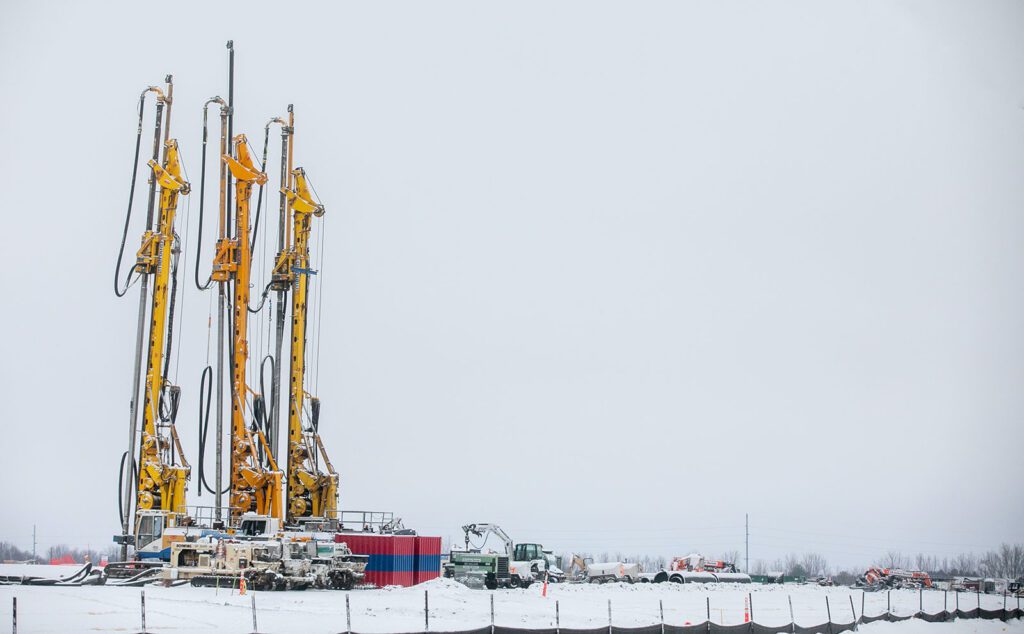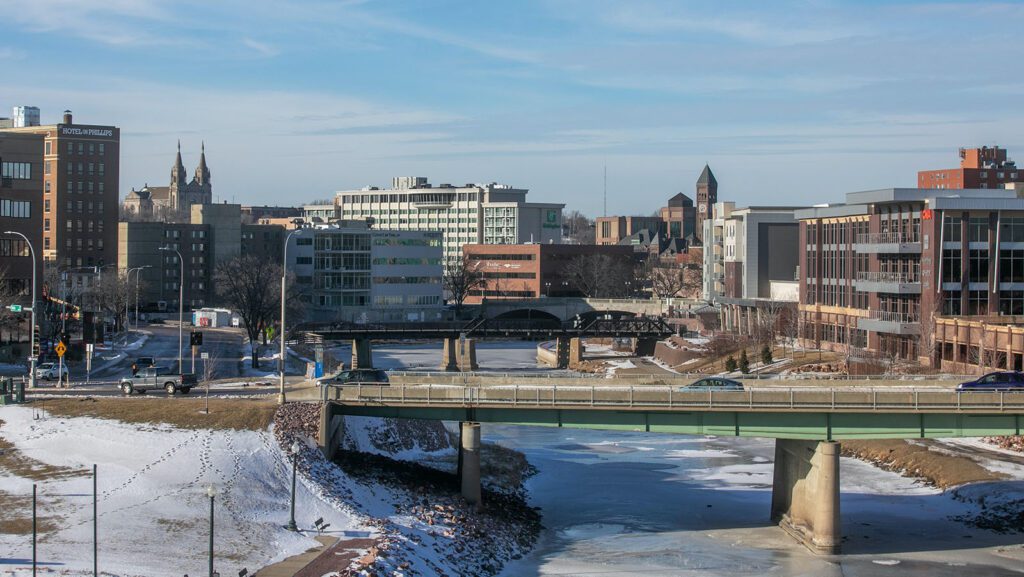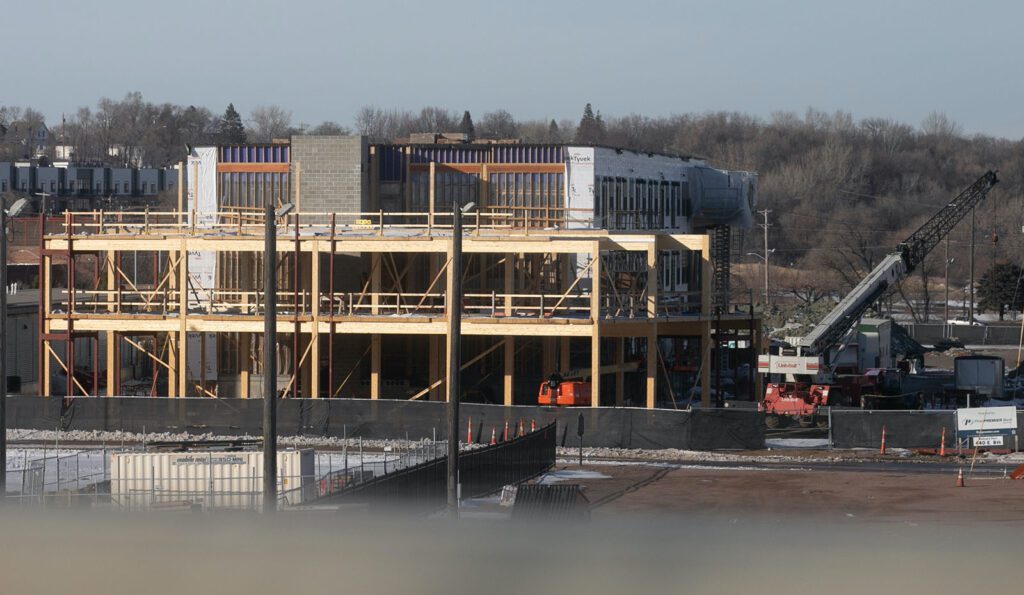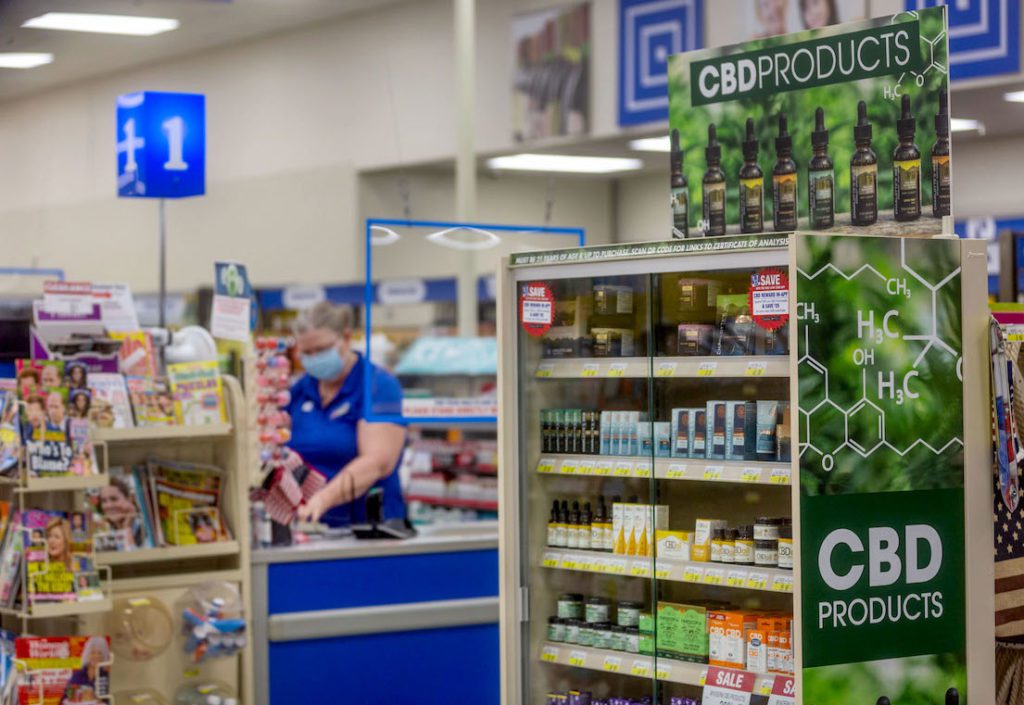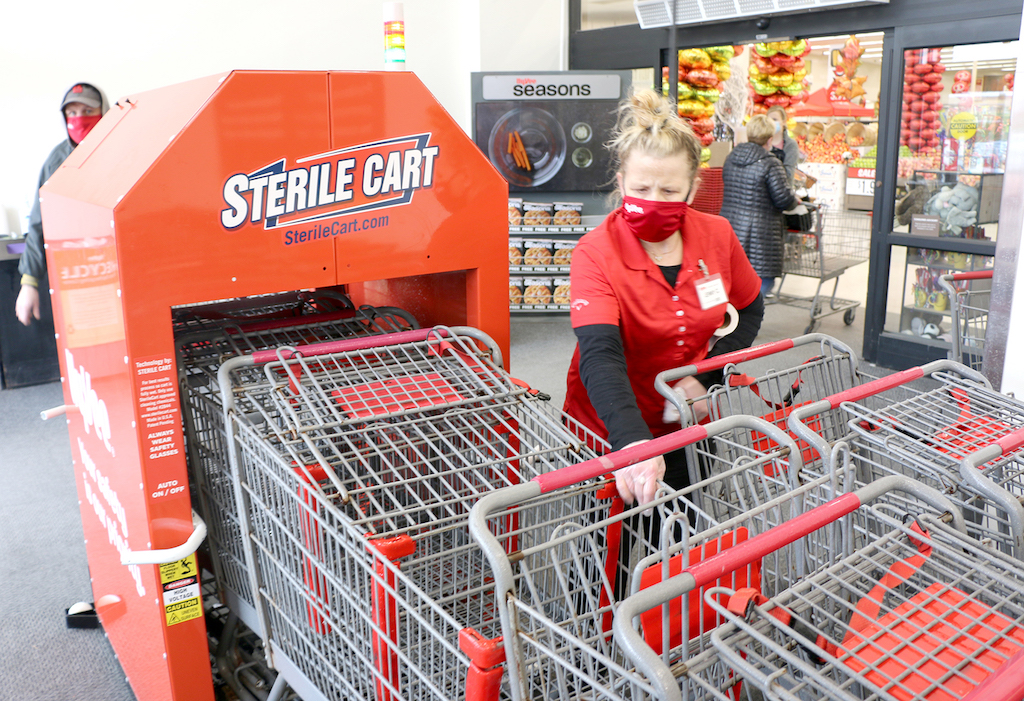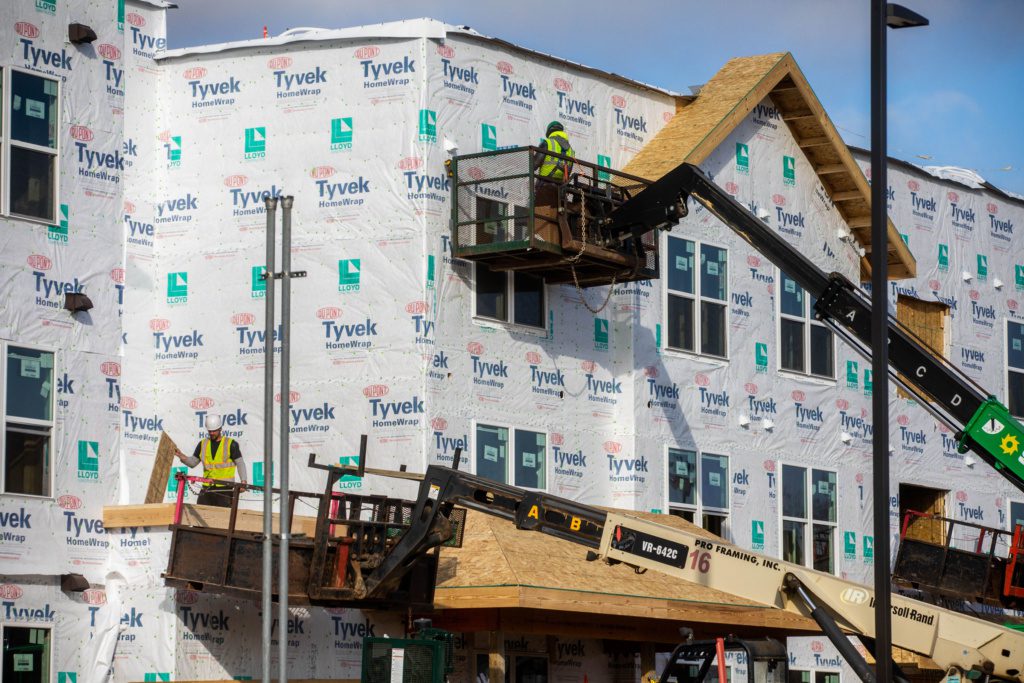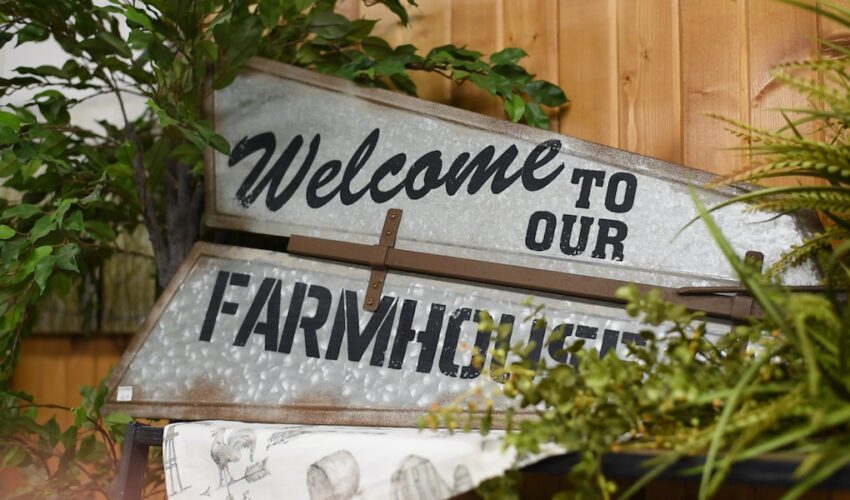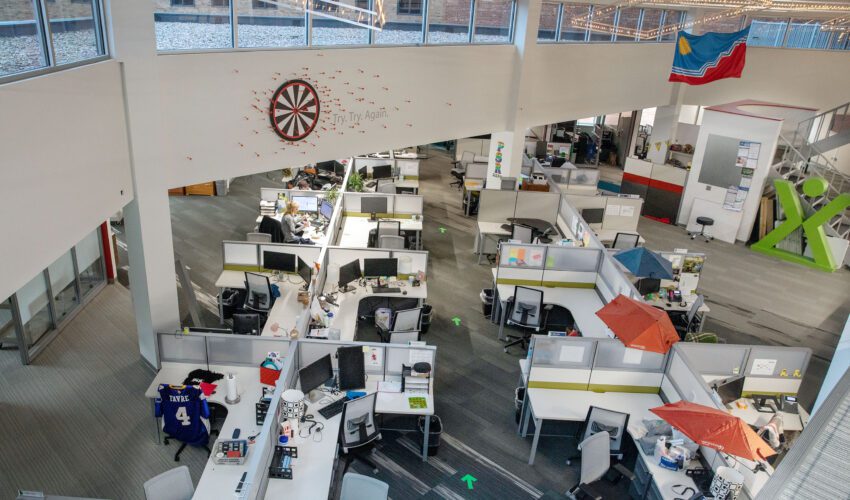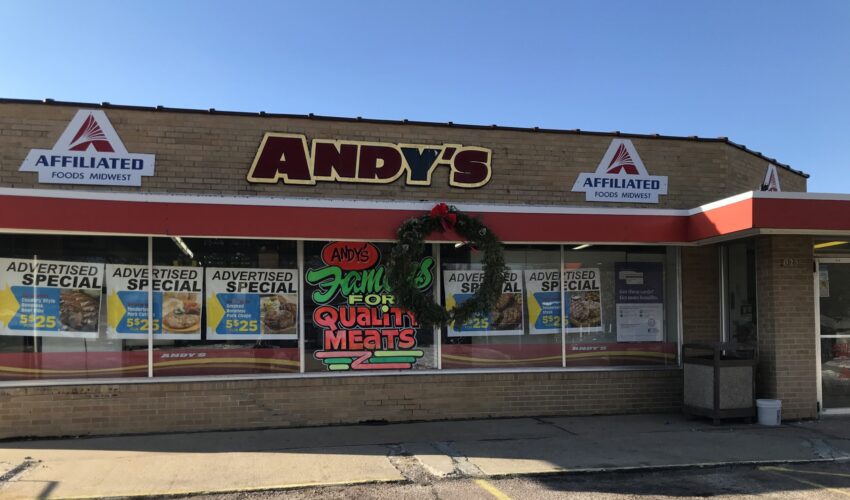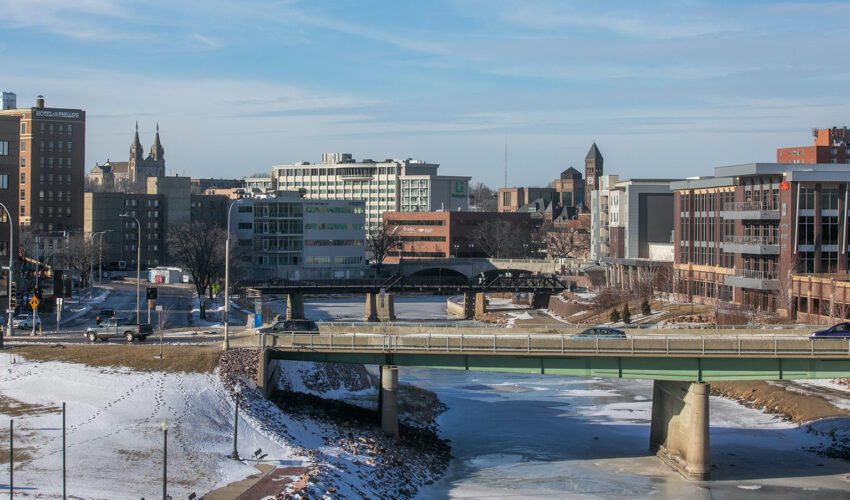Resilient, record-breaking year sets up Sioux Falls for more growth in 2021
Dec. 28, 2020
With fewer than 10 days left in the year, the biggest project in Sioux Falls history became official.
Valued at more than $211 million, Amazon’s building permit created a record-breaking ripple effect, pushing the city’s overall building activity for the year in excess of $900 million.
That compares with last year’s total of $771.5 million and the previous record of $786.6 million set in 2018.
Not bad for a year when it seemed for a time that business might all but shut down.
“I had some great expectations, but then COVID hit, and I kind of tempered those expectations,” said Bob Mundt, president and CEO of the Sioux Falls Development Foundation.
“And looking back, now we’ve had probably the best year we’ve had in a long time.”
City officials were surprised too.
“In May or June, we were thinking if it would get to $500 million we’d be lucky this year,” said Jeff Eckhoff, director of planning and building services. “Nothing was happening. And then all of a sudden, it’s a lot of things.”
And it’s only partly because of Amazon, he added.
“It’s interest rates, it’s people moving here for different reasons, and then there is the buzz around Amazon,” Eckhoff said. “For example, apartments. We have $165 million in apartments (through November), over 1,400 new multifamily units. We had one year of absorption, and then this year went nuts.”
Incredible though it might seem, next year looks positioned to bring more of the same. Even a $900 million-plus record might not be too far out of reach.
“We’re just not slowing down,” said Steve Westra, commissioner of the Governor’s Office of Economic Development.
“The amount of calls we’re getting at GOED continues to be record-setting. The last three quarters of 2020, plain and simply, has been exciting to be at GOED to say the least.”
The pipeline of business activity from newcomers and existing businesses seems to be robust.
“From a large-employer perspective, most of our interest is coming from manufacturing, processing, logistics and distribution,” Mundt said.
“The biotech markets and the cybertech markets are still developing, and they’re not large-scale employers. We’re really trying to work hard with Madison, S.D., to keep DSU students here. So many leave the state, when we have opportunities here, so we have to do a little work internally to sell the young talent on the state and expose them to opportunities we have available here. And we have to be competitive with the Austins and Silicon Valleys of the world from a pay perspective. Many of these young folks will go anywhere to work.”
At a state level, interest is “all over the board,” Westra said. “There’s not just one particular sector we’re seeing. I think as we continue to get these new businesses, it’s going to be a real opportunity for those who are underemployed and really up the overall workforce within the state to where there are going to be new opportunities.”
Existing businesses, with the exception of a few industries, seemed to fare well, said Jim Jarding Jr., a CPA and tax partner at Eide Bailly LLP.
“Surprisingly, most businesses I work with had a good 2020 year financially unless they were in certain industries such as hospitality, restaurant or entertainment,” he said. “The outlook for 2021 is guarded. A lot of businesses are worried about their supply chain and the lack of merchandise and inventory for retailers and the lack of materials for manufacturers. Companies continue to deal with workforce shortages as well as a disruption to their labor forces due to COVID-19 and/or remote working.”
Sectors that fared well in 2020 include construction, auto dealers and certain retailers, he said.
“Contractors are less optimistic for 2021 as there is a concern of a lack of backlog to the extent projects are delayed,” Jarding added. “Balance sheets for the most part are pretty healthy. Businesses were able to take advantage of the PPP loans and the state COVID fund moneys. And a number of businesses were still able to have very profitable years. Plus, most Sioux Falls business owners are conservative by nature and tend to leave more capital in their businesses.”
Large contractors came into 2020 with some of their biggest backlogs ever, but pipelines opened up later in the year as customers put a pause on expansion plans, agreed Chris Ekstrum, CEO of The First National Bank in Sioux Falls.
“I don’t know that those pipelines have been backfilling just yet,” he said. “People were a little nervous about the election and PPP loans being forgiven, so on the construction side that’s going on.”
In banking, performance is “all over the board,” he added. “Some banks are in good shape. We’re going to have a record year this year. And some are really hurting. If they’re heavy in oil and gas, they’re really hurting. If they’re exposed to investment real estate, hotels, hospitality, they’re really hurting. That’s never been our niche. Our niche has been the business with working-capital needs.”
The next couple of years will be difficult for banking because of continued low rates, he predicted.
“It’s hard to make a margin on your balance sheet,” he said. “I feel in a pretty good spot because our trust and wealth management is a consistent source of noninterest income and our ATM debit card network, but if I was a bank living on my balance sheet and had heavy exposure to hotels, I’m pretty nervous right now.”
The Paycheck Protection Program also helped bolster businesses in various ways, he added.
“I think people generally feel good about things. Most businesses are faring better than expected. PPP lending in some cases kept people afloat, and in some cases it was a capital contribution to the business. And I’m not being critical. The intent of the law was to create confidence and spur economic development, and once the loan is forgiven, they’re talking about buying a piece of equipment. A lot of decisions were put on hold until they learned where that would go, and generally the outlook is positive.”
Retail outlook
Retail success in 2020 was variable, to say the least.
For businesses such as Lewis Drug, the year was strong.
“We are in a good position supporting everybody’s COVID challenges because of our basic, convenient, safe locations … things have been real solid,” CEO Mark Griffin said.
“We’re flexible in terms of ordering, staying in stock. We can buy a semiload whereas some of the chains would buy trainloads, so we’re able to refill faster, stay in stock better, and you’re not going to see shelves at Lewis swept of products because we’re able to refill fast. That’s another reason our sales are double-digit over the pandemic and so solid is because we’ve been able to stay in stock.”
Christmas brought a “tremendous spike in outdoor decor and indoor decor,” he added. “The garden centers did very well this fall because people don’t leave their house or property really and enhance what they have, so that’s been good. We’ve actually issued bonus programs for all our full-time and part-time people during COVID twice.”
Grocery stores and hardware stores statewide reported strong sales while other categories struggled, said Nathan Sanderson, executive director of the South Dakota Retailers Association.
“It’s all over the board. If you’re a shoe store or clothing store, it’s probably been a little bit of a down year. If you’re selling sporting goods or anything related to recreation, you’re probably doing OK.”
Even the restaurant business enters the new year with 2020 results that varied.
“We had customers in the fast-food business who are having their best year ever,” Ekstrum said. “Even some full-service restaurants have a robust takeout menu and added functionality in their apps.”
Griffin predicts the first quarter of 2021 will continue the upward trend for his business. And as vaccines ramp up, “all our people are trained, so we’re in good shape, and people can trust to come to Lewis, and they will get treated right,” he said. “We have meetings two or three times a week about the vaccine and what we’re going to do and how we’re going to do it, and it’s not that different from flu or shingles or pneumonia. The flu shot business is up about 50 percent.”
Overall, “I think the economy is going to be pretty good,” he added. “We’re fortunate in Sioux Falls we’re kind of in a bubble, and that’s been positive, and I think that will happen in the first quarter and second quarter. People will still be a little bit safe about their activities and still want to nest in their house and be careful.”
Statewide, “as you look toward 2021, most of our business owners are optimistic,” Sanderson said. “We have regional reps around the state and ask questions every week of different businesses, and within the last six weeks, 78 percent of people who responded are optimistic or very optimistic about 2021.”
Commercial activity somewhat unknown
Signs of optimism are still comingled with questions marks when trying to predict what will happen in the commercial real estate market next year.
“From what we’re hearing, it could really be a tremendous year next year,” said Eckhoff at the city. “Every time our guys come back from the field … we’re just seeing a lot of optimism out there right now.”
Despite an increase in apartments in 2020, “we’re hearing a lot of noise about apartments again,” he said.
Developers echo that with multiple projects planned.
“There’s a lot that’s been in development, that’s been in the pipeline, that is just now coming to fruition,” said Joel Dykstra, CEO of RMB Associates, which has multiple apartment projects in development and construction.
“I think that the right projects in the right locations (will be successful). We’re still growing demand; we’re still growing in population. I think it’s an exciting time. I think the only thing that’s going to slow it down is land availability. There are a lot of folks scrambling to find locations. I think we’ll see more projects in the northwest, and the northeast is lagging a little.”
The community has proven “more resilient than I think anyone would have thought,” said Michael Bender, CEO of Bender Commercial Real Estate Services.
“It’s definitely stronger here. Unless you’re in the hospitality or restaurant business or a service kind of business, I think everybody has been breathing a sigh of relief that there’s some kind of normalcy. On the construction side, if they were commercial, they went to multifamily, and if they were a single-family builder, they went to multifamily and some single family. They’re not building hotels. I doubt you’ll see many office buildings for a while, but it’s amazing how quickly people can shift their focus and try not to miss a beat.”
At Lloyd Cos., that was the story of 2020 as the company was set to do $280 million in projects centered around hotels at the beginning of the year.
“And we just stopped,” executive vice president of development Jake Quasney said. “And it wasn’t much fun to spend three months with very little construction activity, but then we started breaking ground on projects and finished the year going really strong into 2021. We’re in a good spot with the projects we have in the pipeline and what we have teed up and ready to go in the spring.”
Lloyd shifted to work on more than a dozen apartment projects on all sides of Sioux Falls and into Harrisburg. Many are large, multiphase complexes that will continue building for multiple years.
“These are all projects we had on our radar and were working toward … so we had to accelerate that and get it right and position ourselves to continue to be a market leader in that space,” Quasney said.
Health care construction remains fairly unknown. Sanford USD Medical Center has brought in building plans for its previously announced expansion on the main Sioux Falls campus but nothing yet for properties where projects are planned on the east side.
Avera has started construction on a $28 million addition at Behavioral Health but hasn’t announced any additional plans for its Avera on Louise campus or land it owns on the east side.
“The one thing that’s really been impacted by the pandemic is retail,” Dykstra added. “We’re excited by what’s happening in multifamily and single-family housing, but we’re waiting for the retail market to come back. There hasn’t been a lot of new businesses, strip mall or new retail development.”
But retailers that were interested in the Sioux Falls market pre-pandemic “are still interested today,” Lloyd CEO Chris Thorkelson said.
“We’re still seeing activity in that space. We’ve been fortunate in our part of the world to be a lot less impacted than a lot of parts of the country.”
Lloyd continues to work on its downtown Sioux Steel redevelopment and doesn’t rule out beginning construction in 2021 if enough office space pre-leases.
The hotel, a Canopy by Hilton, remains committed to the site.
“They continue to believe in it,” Quasney said.
And in maybe the biggest sign of confidence the market is beginning to recover from the pandemic, Lloyd even is looking toward a hotel project starting as soon as next year.
“We’re hoping to break ground on another hotel in 2021,” Quasney said. “It won’t be in Sioux Falls, I don’t think, but we believe you could start to see some financing activity take place on those in 2021, and by 2022, we’ll be back to being pretty heavy-going after these projects we’ve been working on.”

